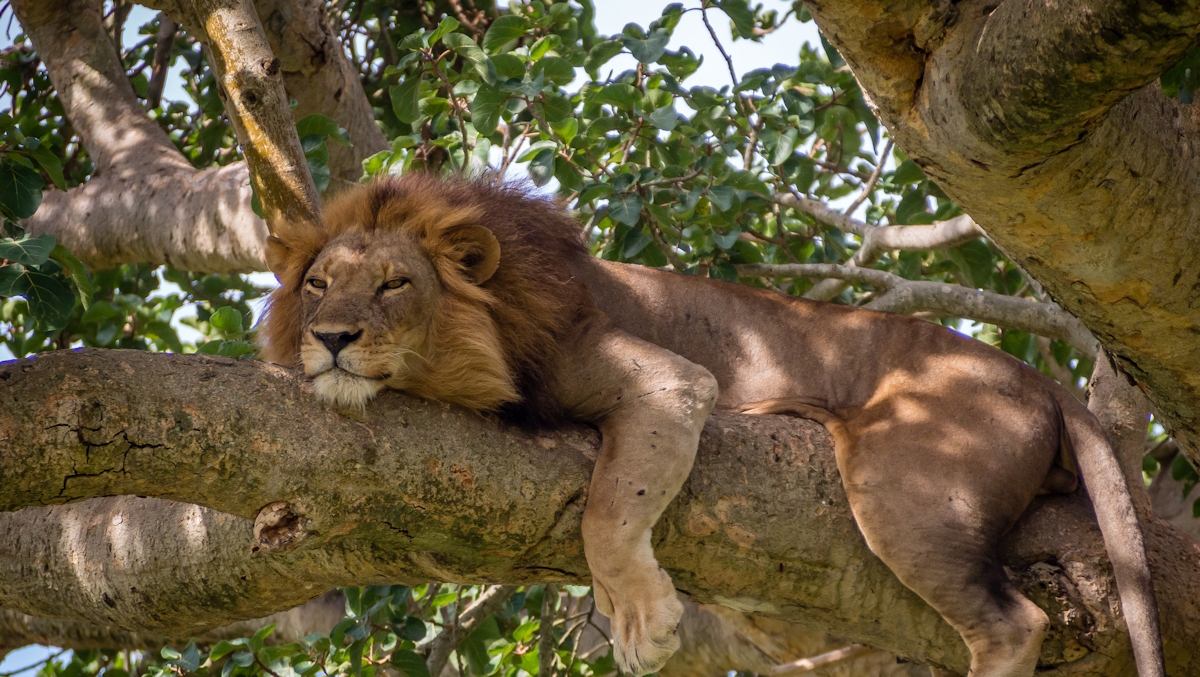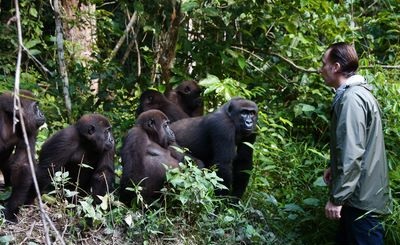
Queen Elizabeth national park
Uganda’s most well-known tourist site is Queen Elizabeth National Park, which is understandable during an African holiday safari. The park’s various ecosystems, which include wide-open savanna, cool, moist woods, glistening lakes, and rich wetlands, give it the perfect habitat for traditional large game, ten primate species, including chimpanzees, and more than 600 kinds of birds.
The park’s breathtaking views include dozens of enormous craters that have been dramatically carved into rolling green hills, panoramic views of the Kazinga Channel, whose banks are lined with hippos, buffalo, and elephants, and the endless Ishasha plains, whose fig trees conceal lions ready to pounce on herds of unwary Uganda kob. All of these sights are set against the ragged Rwenzori Mountains.
Located in western Uganda, shared by districts of Kasese, Bundibugyo and Bushenyi, Queen Elizabeth park is 1978km2 in size. The park lies 5-6 hours from
Kampala on a surfaced road via Mbarara, and can be reached on a dirt road from Bwindi. It includes parts of Lakes Edward and George which are linked by Kazinga channeland other attractions. Accessing the park from Kampala is either on tarmac through Mbarara (420 kames) or Fort Portal via Kasese (410kms). The park is 5-6 hours from Kampala on surface road via Mbarara. This Uganda safari park can also be reached via Ishasha sector, which is south of Bwindi Impenetrable National Park.
ACTIVITIES TO DO IN QUEEN ELIZABETH NATIONAL PARK
Find out everything you need to know about Queen Elizabeth, including directions, points of interest, lodging options, maps, tour companies, and Uganda safari excursions to Queen Elizabeth National Park in Uganda.

Lions who Climb Trees
Lions: Do They Climb Trees? It is rare to see lions actually climbing trees. Only two populations of these lions exist worldwide, and they regularly climb trees as part of their daily activities. In the south of Uganda’s well-known Queen Elizabeth National Park, in the Ishasha sector, one of these populations can be discovered.

Tracking of chimpanzees
Typically, 30 to 80 members make up a troop, which is how chimpanzees live. Smaller, more flexible groups with fewer members—possibly all men, all females, or occasionally mixed—make up the larger groups.
The Chimps occasionally chew leaves until they are absorbent, at which point they utilize them as sponges by submerging them in water and squeezing out the excess moisture. Additionally, the chimpanzees use twigs or occasionally grass stems as tools by pushing them into termite or ant nests, where the insects are attracted to and consumed by gorillas. They can squish nuts between tree roots and use a stone to crack open the shells.

Game Drives
Visitors to this activity drive through the park and watch the animals. There are various places with well-kept game viewing paths throughout the Park.
Over 200 kilometers of well-maintained wildlife trails can be found in this park.
Early in the day is the greatest time for game drives because there is a good likelihood of sighting elephants, buffalo, lions, and a variety of antelopes and other Uganda safari animals.

viewing birds
More than 550 different bird species may be seen in Queen Elizabeth National Park, making it a popular destination for people who enjoy observing birds. Numerous aquatic birds can be found in the park along the stunning Kazinga Channel, including the White-faced Whistling, Spur-winged Plovers, Squacco Heron, Fish Eagle, Pink and White Backed Pelicans, Long-tailed Cormorants, African Jacana, Yellow Backed Weavers, open-billed Stork, Water-Thick Knee, Pied Kingfishers, Wattled Plovers, the Black Crake, and the Knob.

